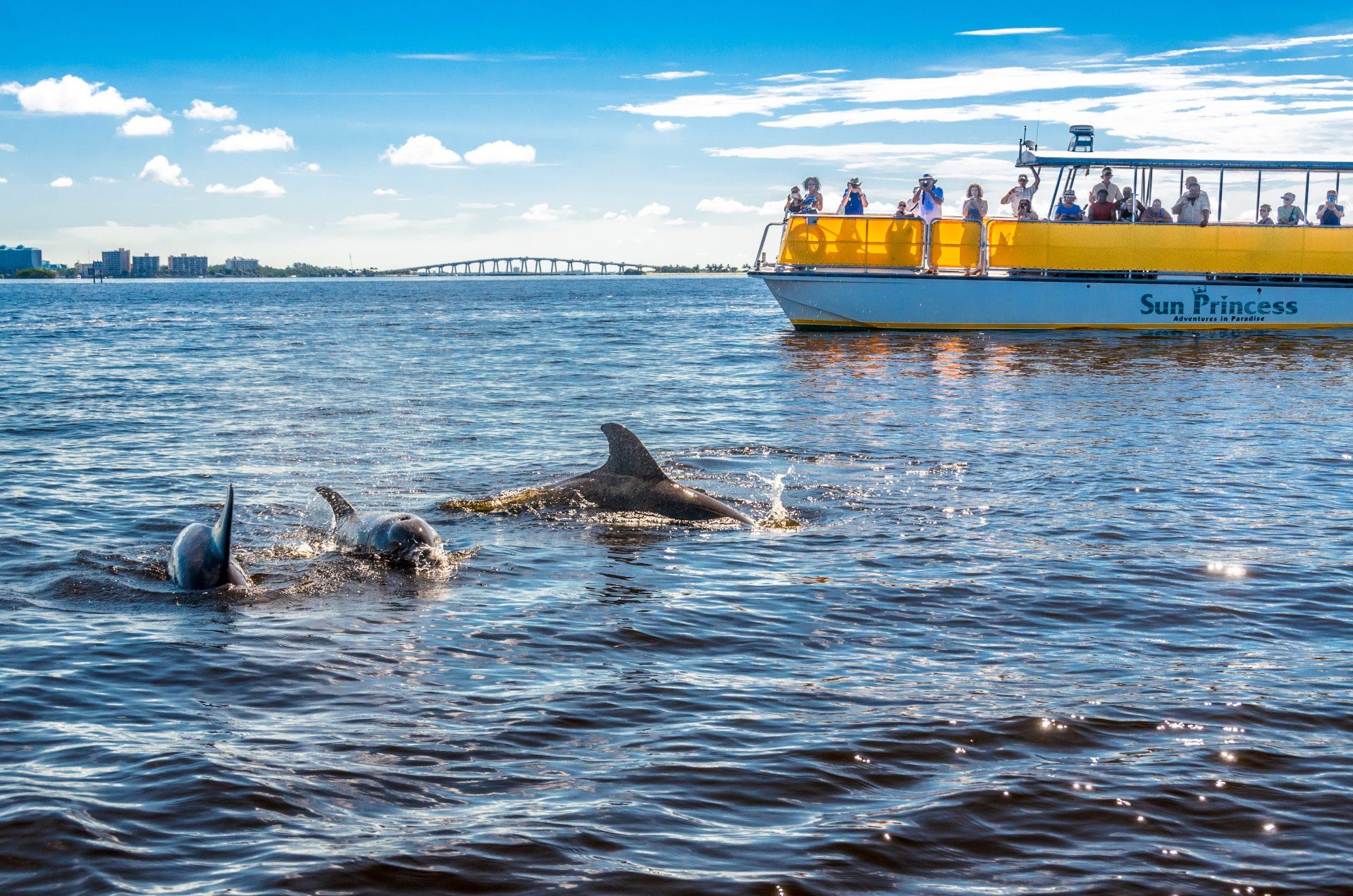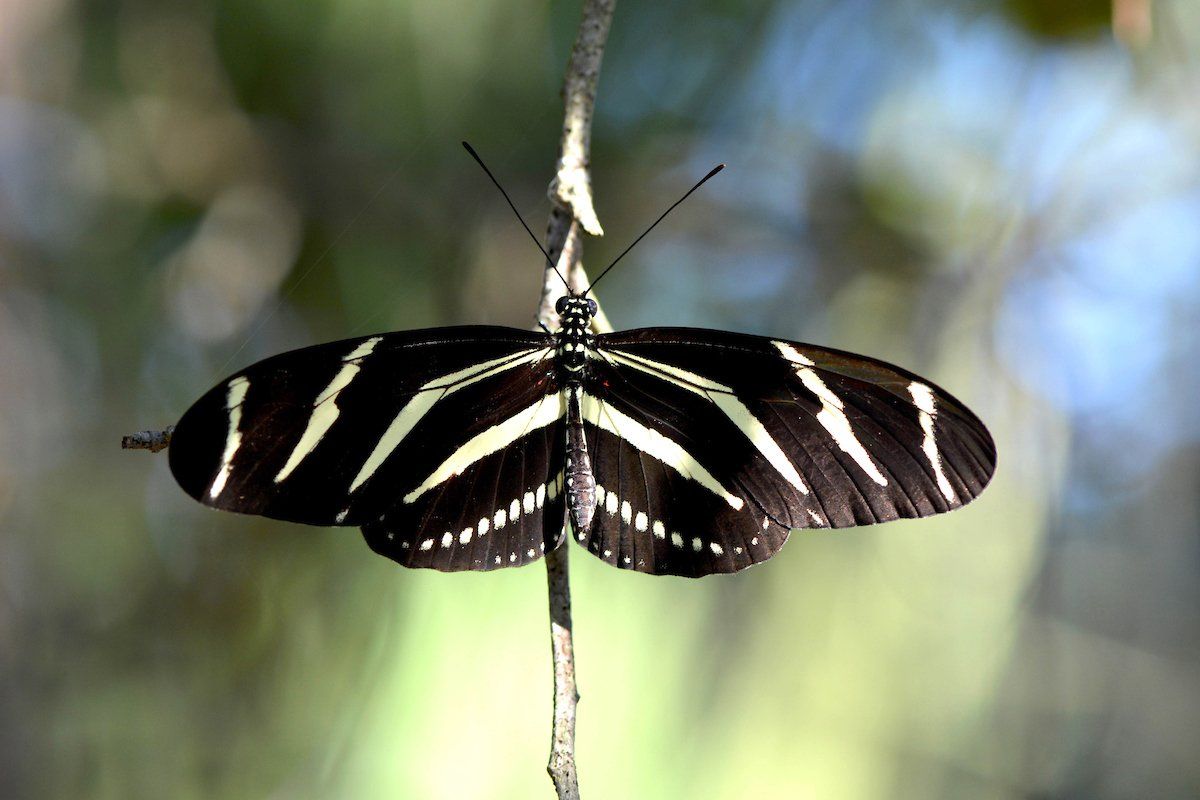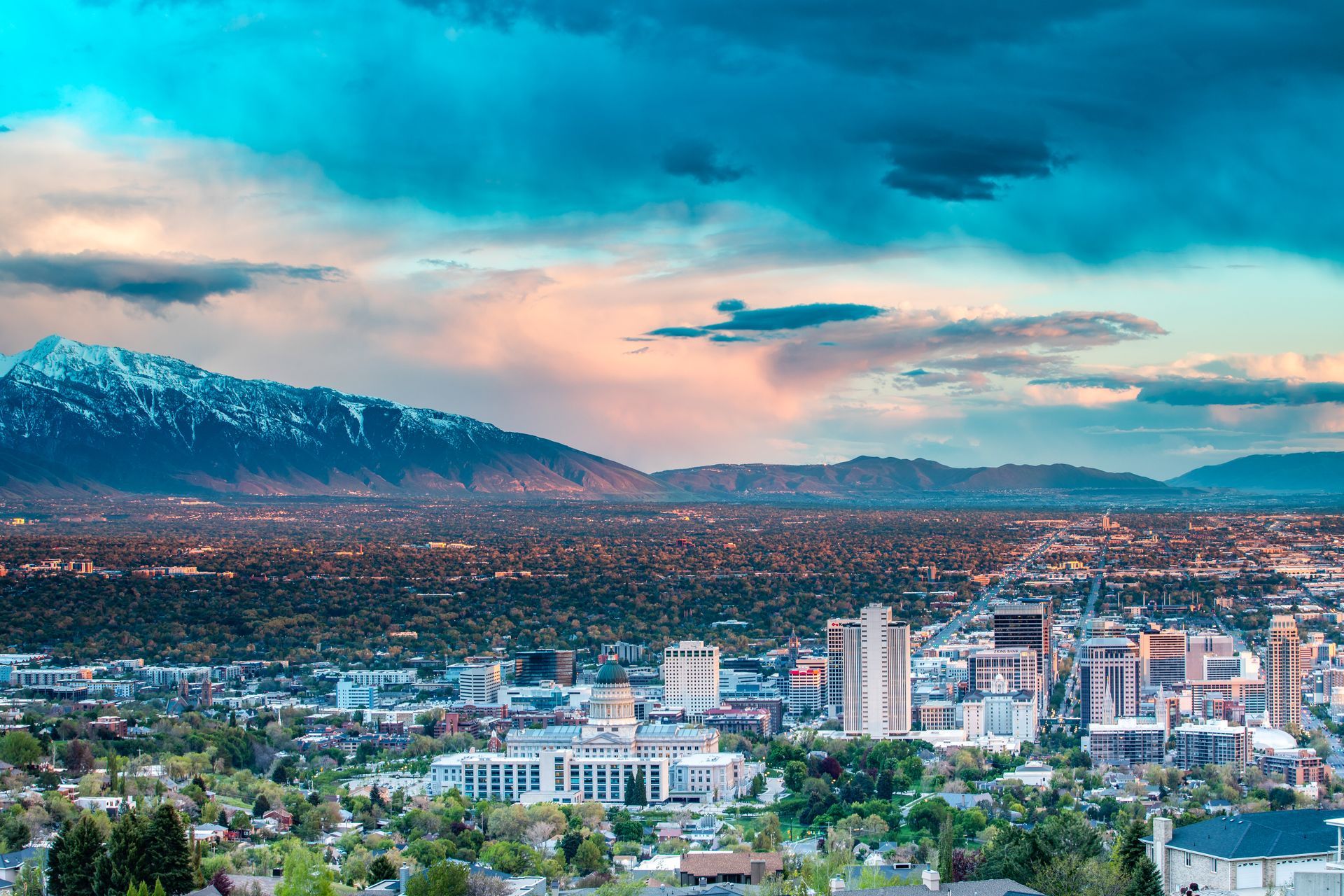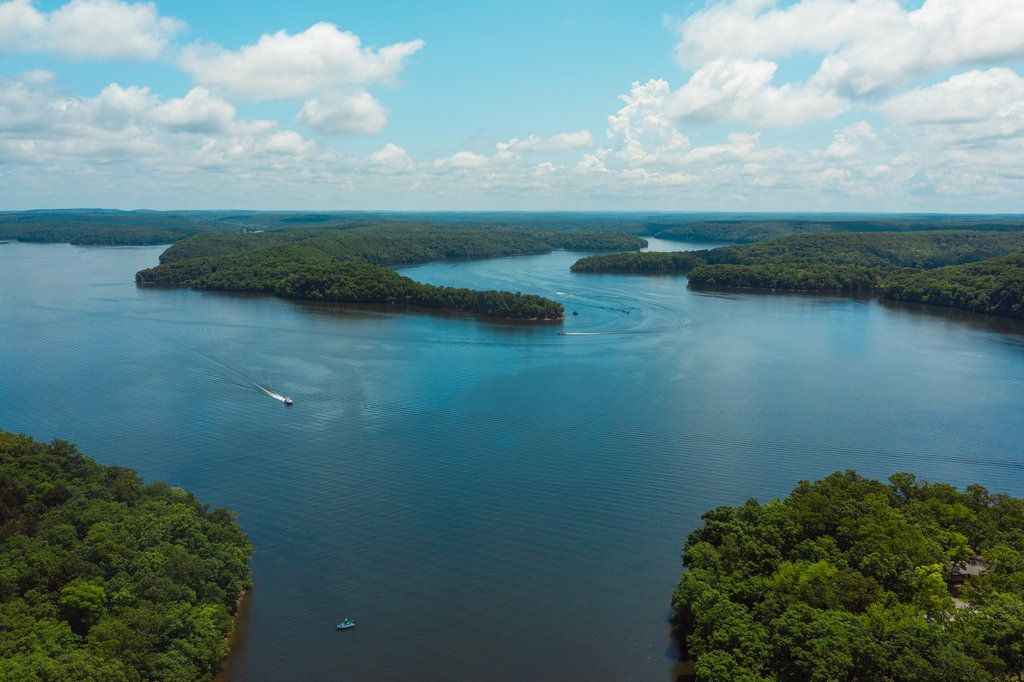A THRIVING WAY OF LIFE
Fort Myers & Sanibel Nature & Wildlife Top 10!

1. MANATEE
One of the friendliest animals you’ll encounter, the manatee is also one of the Gulf’s most iconic creatures. Most people never forget their first experience with these gentle giants. Drawn to the coastline by the warm waters, keep an eye out when you’re in a kayak in case one surfaces next to – or accidentally under – your boat.

2. DOLPHIN
Sharing the manatee’s love of warmth, the dolphin has made a positive name for itself in these waters. More common in the Gulf than the Atlantic Ocean, you can often see them playing in Pine Island Sound while on charter cruises like those offered at Adventures in Paradise or Captiva Cruises.
The Beaches of Fort Myers & Sanibel are revered as one of the top spots to have an up close experience with wild dolphins. Home to some of the friendliest and most daring porpoises around, the area hosts a wealth of offshore excursions that all but guarantee a sighting from boats.

3. LOGGERHEAD TURTLES
Each year sometime around May, female loggerheads instinctively return to the beach where they were born and dig deep pits in the sand to serve as nests for their clutch of eggs. Each female typically lays over 100 eggs, buries them and then quickly returns to the safety of the ocean. After about 80 days, the hatchlings pop up out of the sand to make their perilous way to the water, hoping to avoid hungry predators along the way. Beaches here are “turtle friendly” with a no plastic straw policy, no lights and no structures allowed on the beach.

4. BIRDS
The most sought-after wildlife to photograph is the abundance of migratory birds. If you’re interested in serious bird-watching, pack your camera and head to the J.N. “Ding” Darling National Wildlife Refuge on Sanibel Island. You might even see bobcats and river otters patrolling the mangroves and other habitats, like nature intended.
The region’s natural sanctuaries are home to countless species of native and migratory birds. Some you should see include the iconic Great Egret, the enormous American White Pelican, the colourful Roseate Spoonbill, the American Peregrine Falcon and of course, the spectacular Osprey. Some are seasonal and can only be found December – March, like the White Pelican.

5. WILDLIFE WALKS
If you are looking for a nature hike or bike trail, Southwest Florida has much to offer including the Pine Islands Flatwood Preserve and the J.N. ‘Ding’ Darling National Wildlife Refuge one of America’s largest mangrove eco systems. While the 3,400 acre of wetland at Six Mile Cypress Slough Preserve is also well worth considering, although reservation may be necessary for guided tours.

6. NATURE EDUCATION EXPERIENCES ON SANIBEL ISLAND
There is so much to be learnt about the wildlife in this fascinating area. For a more in-depth knowledge there are some fascinating educational stops such as the Sanibel Sea School and the J.N. ‘Ding’ Darling Nature Wildlife Refuge. This 7,600-acre wildlife refuge is home to 51 types of reptiles and amphibians, 32 mammal species, more than 230 species of birds. Paddling, hiking/biking trails, observation towers and a four-mile scenic drive. Indigo Trail opens daily leading to the Wildlife Education Boardwalk's scat and tracks replications. Free hands-on Visitor & Education Centre open daily with free seasonal programs and tours with master naturalists. The Clinic for the Rehabilitation of Wildlife (CROW) operates a veterinary hospital, educational program and public visitor education centre on a 12.5-acre campus on Sanibel Island, Florida. The organisation's primary mission is the rescue, care, rehabilitation and eventual release back to the wild of sick, injured and orphaned wildlife.
7. FOLIAGE ON USSEPA ISLAND
Possible because there are no roads and, aside from the smattering of grandiose seaside mansions and the famed Collier Inn, very little development to speak of, this explains Useppa’s reputation as one of the best places to view striking Floridian foliage. In a place where summer lasts nearly year-round, the leaves don’t change colour, but rather exist in a permanent state of vivid polychrome. Take the bright reds and oranges of wild bromeliads, the pastel pinks and yellows of hibiscus flowers, and even the deep purples of scaevola knows no season. Near the north eastern shore of the island is a century-old path called the Pink Promenade which leads you under spectacular archways of banyam tree branches. These are so dense and complex that each individual tree looks like a self-contained forest. They also grow large, leathery, deep green leaves. In fact, the selection found on Useppa Island produces the biggest banyan leaves in the entire country. Useppa Island is a private island and can only be visited with Captiva Cruises.

8. BUTTERFLIES ON THE BEACHES OF FORT MYERS & SANIBEL
The lush plants and trees you’ll see here are native to Southwest Florida and provide an important sanctuary for the area’s wildlife and the butterfly is one of our favourites so do visit The Butterfly Estates. This eco-friendly, non-profit conservatory is dedicated to protecting and growing Florida’s butterfly population. Since their grand opening in 2009, The Butterfly Estates has been raising and releasing hundreds of butterflies each week. Visitors can immerse themselves as they walk-through the conservatory filled with native butterfly species and take part in garden presentations about the butterfly life cycle.

9. STAND UP PADDLE BOARDING
First, it’s an excellent idea to take a lesson so that you’re comfortable on a paddleboard and on the water. Once you’ve got a little practice in, or if you’re already an experienced paddler, explore the more secluded areas like Bowman’s Bayou on Sanibel which ends at a lovely isolated beach with abundant marine life and birds. There is also so much to see at Lovers Key State Park and Cayo Costa State Park and are perfect for flat water paddling. Access to Cayo Costa is only by boat you be sure to bring your paddle board with you!

10. SHELLING
If the best souvenir is free, then in Southwest Florida, our beaches are some of the best in the world to find these gifts from the sea. From first-time scavengers to seasoned shellers, it’s easy to see why anyone can find amazing seashells here, and why so many keep coming back for more. Many hotels have shelling guides and maps to learn more as you “shell” at your leisure. Both entertaining and free, it is a great activity for kids to enjoy.

For more information on holidays to The Beaches of Fort Myers & Sanibel click hereor call us on 020 8742 8299.










